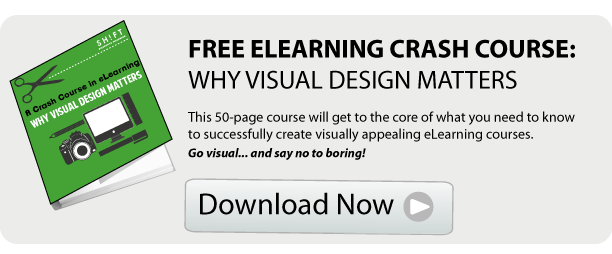Winning eLearning courses come in different types and packages, each of which perfectly suits the learner. All of them, however, share notable similarities—universal traits that explain why they are effective and what makes them better than the average. Below is a quick list of traits you definitely should consider for your next project.

1) Engaging But Not Distracting
Getting learners to focus on your material is difficult, no thanks to the onslaught of information on the web. Efficient course developers make focusing with the material easier by making it fun and engaging. Instead of fussing over interactive and flashy elements, they prioritize active learning by placing students in charge of their lessons. This is why they’re able to craft winning courses that are highly engaging.
2) Simple and Useful
Simplicity and usefulness are basic elements of the “it just works” principle. Companies like Braun and Apple, for instance, are perfect models for this. Every product they ship is easy to use users don’t need a manual to make it work.
Don’t underestimate the power of keeping things simple and useful. Instead of trying to accomplish a lot of unnecessary work and do things poorly in the end, concentrate your efforts to one or two essential stuff.
3) Relevant and Meaningful
What’s the meaning of all these? Can I apply these at work or my day-to-day living? Learners may appreciate lofty theories but they need to understand first how your course can benefit them. You have to design courses that affect how learners choose or decide on their personal or professional lives.
4) Short and Sticky (Easy to Remember)
Make it easy for your learners is a difficult and time-consuming task. This means crafting courses that are shorter, better targeted and personalized. It’s quite easy to add more content in an effort to offer everything to your students. But this is going to be futile, if not utterly useless, since learners have limited time and attention.
Respect your students’ time by keeping your content concise and focused. Aim for meaningful interaction, not more information; simple yet purposeful graphics, not complicated and flashy images and videos.
Twenty minutes is usually the longest time for effective eLearning content that delivers the benefit of greater recall. It’s enough time to include elements such as repetition and idea-connection and help users remember most of what they’re learning.
5) Polished, from Start to Finish
Winning courses start with a bang and end with bang. Every section is consistently polished. Quality is never compromised. The entire course is a work of a craftsman who delivers a consistent learning experience through ruthless editing, revising and polishing.
6) Ensures Learning, Motivates Learners
You may have the hottest content available but if the learner is not motivated, it would all be a waste of time. Effective eLearning courses are desirable and motivating by design. It offers an attractive learning environment for learners, who find it worthwhile to click next and stick until they finish the course.
Ensure learning by making students achieve, perform and demonstrate competency. Make them act on a concrete goal or have them apply the lessons in real life situations.
Motivate them to learn be encouraging participation. This is only possible if you know their specific needs and adapt your tools and methods to such needs. This personalized approach definitely trumps any high-tech yet cookie-cutter strategies for online teaching or instruction.
Take a look at some winning eLearning course and dissect them if you want to. Don’t pay attention to the technology used in creating them. Focus instead on their underlying principles and you’ll notice that all of them share these universal traits.
What else can you add to this list? Tell us!




